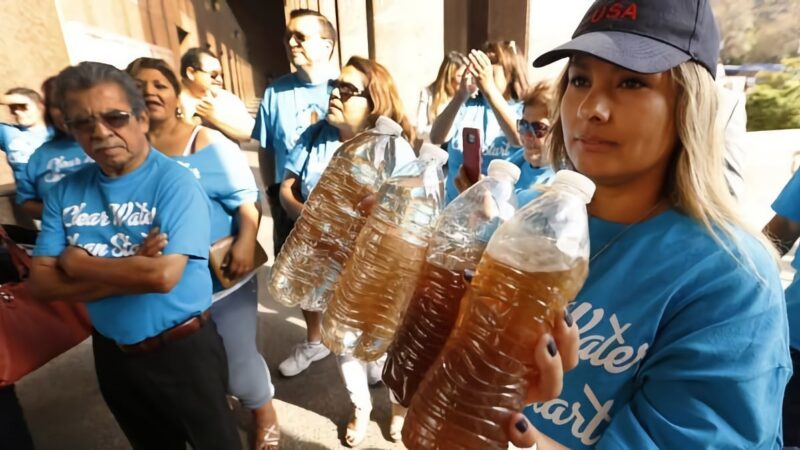Disadvantaged communities concentrated in southern Los Angeles County lack fair options when it comes to water supply. When served by public utilities, aging infrastructure, water quality problems, and other complications can translate into sacrifices in quality or reliability. When supplied by investor-owned utilities, they receive reliable water supply but pay more than affluent communities.
This report examines the case study of Sativa County Water District, a cautionary tale of a failed water system in southern LA County. It then analyzes the 29 existing disadvantaged water systems and makes recommendations regarding possibilities for consolidation and other solutions to bring more water equity to California’s water supply.
UCLA Report Shows Small Water Systems in LA County Disadvantaged Communities Suffer from Poor Water Quality, High Costs and Insufficient Funding
This report identifies the 64 community water systems in Los Angeles County serving disadvantaged or severely disadvantaged populations. These 64 water systems have 281,000 connections, serving approximately 1 million people, nearly 10% of the population of Los Angeles County in 2019. The largest population is concentrated in 29 disadvantaged community water systems in Southern Los Angeles County who largely serve communities of color. The Legislature has appropriated funds for a separate risk assessment of the 29 disadvantaged or severely disadvantaged community water systems in this region.
The report focuses on a case study of the Sativa County Water District, a failed community water system in Southern Los Angeles County, taken over by Los Angeles County as Interim Administrator. We examine the causes of failure, the risks to the customers, and the circumstances that precipitated action after many years of problems. We assess the progress towards improving the water system since the Administrator took over the system and the progress towards finding another community water system willing to acquire Sativa.
Then we move onto a broader analysis of the location and key characteristics of all community water systems in Southern Los Angeles County. This report examines the challenges that the 29 disadvantaged water systems face in providing clean, reliable and affordable water to their customers in this subregion. We then discuss whether consolidation is a potential solution for disadvantaged systems at risk of failing. We report the views that different stakeholders expressed about consolidation and other optional solutions for community water systems.
The Study
Using a mapping methodology developed by the late Professor Mike Reibel (Cal Poly Pomona), the study generated the median household income of community water systems in the region served by the Water Replenishment District of Southern California (WRD), in southern Los Angeles County. It then assessed the community water systems serving those communities, compiling data on system structure, water supply source, water rates, and governance. The authors also listened to community-based organizations’ perspectives on drinking water in the region. The report examines more closely Los Angeles County’s appointment as the administrator for the failed Sativa Los Angeles County Water District (Sativa). It makes findings and recommendations for how the region’s drinking water system could improve its service to their disadvantaged communities of color.
Findings
The type of water system serving a community matters, as each type has different governance and authorities.
Even when a water system is well known to have serious problems, it is difficult to dissolve a public agency and has been very difficult to combine it with another.
Disadvantaged community water systems are concentrated in northern and southern LA County, with the southern communities overlying the Central Basin and West Basin aquifers replenished by Water Replenishment District of Southern California (WRD).
Water agencies in the WRD region report few violations of primary water standards in well water, but they have reported multiple, large violations of secondary water standards. Contamination originates in the region’s groundwater.
Recommendations
- Address risks of disadvantaged community (DAC) water system failure early before costs mount.
- The State Water Resources Control Board should complete independent financial audits of DAC water systems at high risk or out of compliance before seeking an Interim Administrator to take over.
- WRD should conduct voluntary financial and infrastructure audits for DAC water systems.
- The State Water Board should obtain accurate water system boundaries throughout LA County, to improve statewide SAFER risk assessments and funding priority plan.
- State Water Board’s administrator program for failing water systems needs improvement.
- Consolidate failing DAC water systems into Investor Owned Utilities (IOUs), while ensuring reasonable water rates.
- State Board should use alternatives to physical consolidation to improve DAC water system operations.
- A joint powers authority may be an appropriate alternative to consolidation into IOUs.


